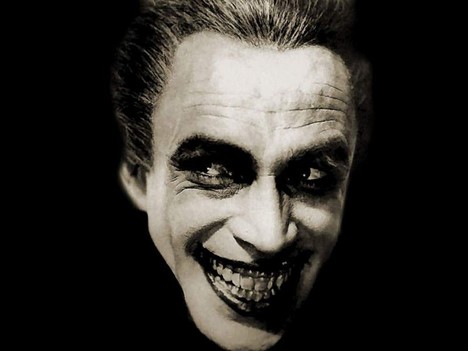The Man Who Laughs (1928)
Paul Leni's "The Man Who Laughs"
After the commercial successes of "The Hunchback of Notre Dame" in 1923 and "The Phantom of the Opera" in 1925, Universal Studios wanted to replicate this success by finding another vehicle for Lon Chaney. Chaney had made a name for himself by playing characters that required heavy prosthetics and make-up and was especially known for doing his own make-up stylings himself. The vehicle for Chaney was intended to be an adaption of Victor Hugo's 1869 novel "The Man Who Laughs." In order to capture the Gothic quality of the source novel, the studio contracted German Expressionist Paul Leni to direct the film. Leni had made a name for himself in Germany with his acclaimed 1924 piece, "Waxworks." Eventually, Chaney's contract expired, so Leni brought Conrad Veidt along from Germany to be his leading man. Vedit had performed for Leni in his films before, including "Waxworks."
The film takes place in 17th-century England, where a young boy's face was carved up by a Comprachino surgeon. His face now contains a permanent smile. When he grows up, he becomes a clown who traverses the country where he is the main attraction of a traveling side show. He is in love with Dea, a blind girl who works with him. Because she cannot see his disfigured face, she is the only person who will ever love him. Eventually, he learns he is actually royalty and is set to marry a duchess. At court, he is gawked and laughed at. He eventually gives up the opportunity to join the elite so he can be with Dea, as Dea does not treat him the way that everyone else does.
Upon the film's release, it did not do well commercially or critically. However, the film's legacy has become far more important than the film itself. Firstly, the film started a new line of Universal monster pictures. In keeping with the gothic and horror-tinged nature of this film, Universal went on to produce "Dracula," "Frankenstein," "The Invisible Man," and "The Black Cat," just to name a few. Secondly, the film was the inspiration for the most popular fictional villain of the 20th century. The slicked-back hair and permanently mutilated smile of Veidt's character were the inspiration for the Batman character, the Joker. Had "The Man Who Laughs" never been made, it could be said that popular American entertainment would have never been the same.




Comments
Post a Comment